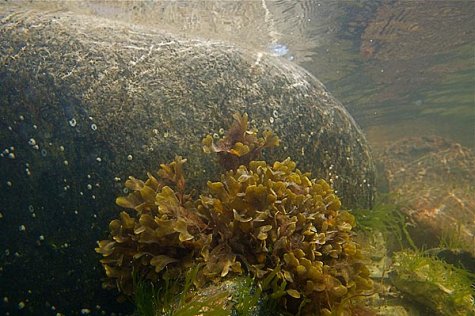Sea smells
Photo Tiit Hunt
Translation: Liis
Bladder wrack
Bladder wrack; bladderwrack Põisadru Fucus vesiculosus
The seawater level was still exceptionally low for autumn in the first half of the week. A small "tempest child“ and south-westerly winds boosted the water level to the Kronstadt zero level (see Kronstadt sea gauge). We will see what the autumn storm that meteorologists have promised for Tuesday will do, there should be seaweed banks on the shore, and their particular iodine smell - the smell of sea.
Bladder wrack is a perennial brown seaweed that prefers rocky and hard bottom areas as habitat. It grows at the shore already at a depth of a few tens of centimetres and until depths of four or five metres. The bladder wrack attaches itself to the bottom by the thallus; it looks like a shrub with flattened branches, height up to half a metre. Brownish-green in colour, sometimes quite dark, the colour can vary strongly. The name bladder wrack, põisadru, comes from the bladders or blisters that keeps the alga afloat – always towards light and the sun.
Bladder wrack has decreased significantly as a result of the abundance of nutrients and water pollution. Water transparency has decreased; a hundred years ago the alga still grew at a depth of 12 meters; today faster developing filamentous green algae stifle the habitats of the bladder wrack.
Reproduction may also be interesting: bladder wrack becomes sexually mature at roughly three years of age, at this time both male and female sexual cells (gametes) develop. In June-July the gametes become ripe and in winter-spring the new alga already starts its regular development.
Bladder wrack growth areas are important life environments for other algae species, the bottom fauna and small fish providing a valuable environment, food, shelter and reproduction opportunities.
No other algae species growing in our waters can replace bladder wrack in the shore sea ecosystem.
Seaweed was formerly a valued field fertiliser for people on the coast; even now it can be composted, for spreading under apple trees and berry bushes, vitalising flower beds. Potassium, phosphorus and mineral substances are plentiful in seaweed...









